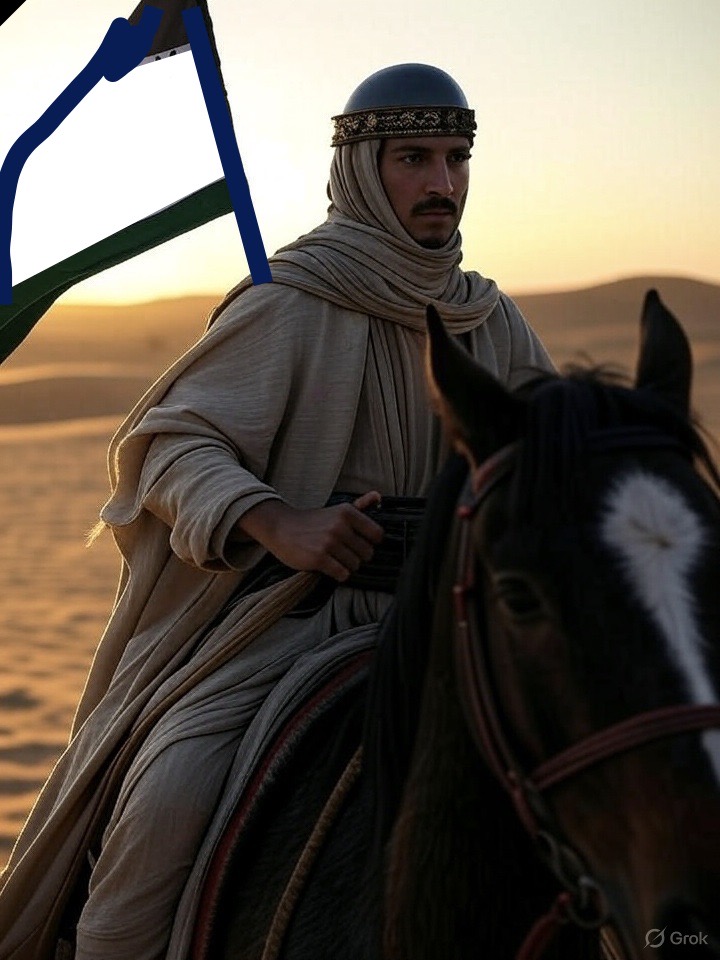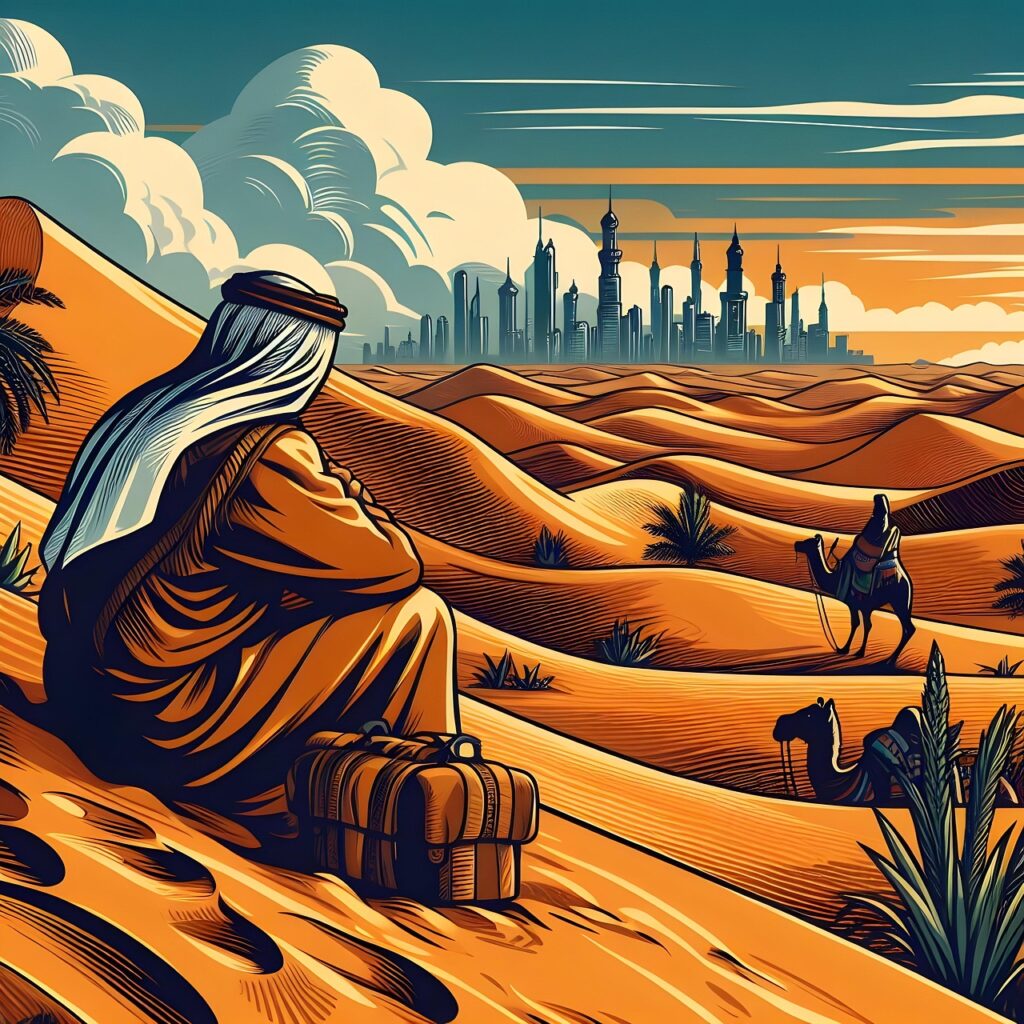
“The Sunni-Shia split happened because of a problem with who should lead the Caliphate after the Prophet Muhammad (SAW). Look into the long-lasting disagreements about power and leadership and how they affect Islam today.
The difference between Sunni and Shia Islam is the longest and most important part of Muslim history. It began when Muslims had a big argument about who should lead and be in charge of religion after the Prophet Muhammad (SAW) died in 632 CE. To make the main changes stand out, here they are:
Table of Contents
The Caliphate vs. the Imamate)
1-CALIPHATE (Disambiguation): Who will succeed the Prophet Muhammad (SAW)?

Sunni View: The Caliphate should be given to the most qualified and religious friend of the Prophet, as picked by the community. In their view, Abu Bakr, Umar, Uthman, and then Ali were the first four “Rightly Guided Caliphs” (Al-Khulafa’ ar-Rashidun).
Shias believe that God chose the leaders (Imamate) through the Prophet (SAW). They think that Ali ibn Abi Talib, who was the Prophet’s cousin and son-in-law, was the first Imam and the Prophet’s true immediate successor. Only the Prophet’s family, through Ali and his wife Fatimah (the Prophet’s daughter), has power.
2 –The Idea of Leadership (The Caliphate vs. the Imamate)
Sunni: The Caliph is a political and military leader who is picked (ideally by everyone) to protect the community and follow Islamic law. Scholars (Ulama) determine the meaning of a religious text by examining the Quran, Sunnah (the traditions of the Prophet), consensus (Ijma), and analogy (Qiyas). As people, caliphs can make mistakes.
Shia: The Imam is a spiritual and political leader who can never make a mistake (ma’sum). He was chosen by God. He is the only one who can properly understand the Quran and Islamic law, and he has the highest religious authority. As spiritual leaders, imams are seen as very important to everyone. (Note: The number of Imams varies among the main Shia groups: There are 12 Imams in the Twelvers group, 7 Imams in the Seveners group, and 5 Imams in the Zaydis group.
Symbols and rituals used in religion
When Sunnis pray, they usually fold their hands across their chest or belly. Say five different prayers every day.
Shia: They often pray with their hands by their sides. Usually, the Dhuhr and Asr prayers are done together, along with the Maghrib and Isha prayers. This makes three prayer times. To kneel (sujud), use a small clay piece from Karbala called a turbah.
3-Holidays to honour Ashura:
Sunni: This is the day that God saved Moses from Pharaoh; people are urged to fast.
For Shias, it mostly remembers the death of Imam Hussein, the Prophet’s(SAW) grandson, at Karbala in 680 CE. Passion plays (Ta’zieh), processions, and sometimes self-flagellation (though many modern scholars say this is wrong) were all seen as ways to show grief and loyalty.
Sunni: All people are not allowed to get married temporarily (Mut’ah).
Shia (Twelver & Ismaili): Allowed under certain legal circumstances, though it’s controversial and not done as often these days.
Layout of the clergy:
Sunni: clergy with less of an organised hierarchy. Imams (leaders of prayers) and experts gain power by learning and being well-known. Not a proper appointment
Clergy Structure:
In Twelver Shiaism, there is a more formalised order. People who are scholars (mujtahids) can get to be Ayatollah (“Sign of God”) and Grand Ayatollah/Marja’ al-Taqlid (“Source of Emulation”). People who follow these leaders are supposed to follow their religious decisions (fatwas).
Focus on religion
4-Caliphate: Theological Emphasis
Sunni: Stress God’s total will and power, which can be seen in Ash’ari theology. Stress how important it is that the early society and the Prophet’s companions agreed (ijma). Hanafi, Maliki, Shafi’i, and Hanbali are the four main schools of law.
SHIA: Make Divine Justice (Adl) a central idea in your religion (this idea comes from Mu’tazili thinking). Believe in the Twelfth Imam’s (Mahdi) occultation (Ghaybah). He will come back to set things right. Along with the Quran and Sunnah, put more weight on what the Imams taught and how they interpreted it. The most common type of law is Ja’fari law (Twelvers).
5-Where Law Comes From
Both agree that the Quran and the Sunnah (the Prophet’s real words and deeds) are the most important sources.
Sunni: Include the agreement (Ijma) of the early Muslim society and scholars and the use of analogy (Qiyas).
Shia:The Imams’ sayings and lessons, which are seen as divinely inspired interpretations, and Intellect (`Aql) should be added as important sources, especially for getting theological ideas.
Important Things We Have in Common:
What We Believe: They both believe in the Oneness of God (Tawhid), the Prophethood (Nubuwwah), the Day of Judgement (Qiyamah), the Quran as God’s direct word, and Muhammad (SAW) as the last Prophet.
Five Pillars: As basic duties, both of them follow the Shahada (proclaiming their faith), Salat (prayer), Zakat (paying alms), Sawm (fasting in Ramadan), and Hajj (a trip to Mecca).
History that we all share: A lot of Islamic history, religion, science, and society are passed down from generation to generation.
Distribution and proportion:
About 85–90% of all Muslims in the world are Sunni Muslims, making up the great majority. Found all over the Muslim world.
About 10 to 15 per cent of Muslims are Shia. They have large numbers in Iran (majority), Iraq (majority), Azerbaijan, Bahrain, and Lebanon. They also have large minorities in Pakistan, India, Afghanistan, Saudi Arabia (Eastern Province), Yemen, Turkey, and Syria.
CONCLUSION
Basically, the disagreement is about who should be in charge of religion and government after the Prophet Muhammad (SAW). Sunnis stress the importance of agreement within the society and accurate interpretation, while Shias stress the importance of divinely appointed, unfailing leadership (Imamate) within the Prophet’s family. Even though they share the basic beliefs and practices of Islam, they have different theological focuses, religious practices, clerical structures, and historical stories because of this main difference.
FAQ: Sunni vs. Shia – The Caliphate Divide
1-Why were Sunni and Shia Islam split up for what reason?
A: The disagreement started over who should lead the Muslim community (Caliphate) after Prophet Muhammad(SAW) died in 632 CE. Shias said Muhammad’s family, starting with his cousin and son-in-law Ali ibn Abi Talib, had a divine right to be in charge, while Sunnis believed leadership should go to elected companions.
2- What’s the core difference in leadership?
A: Muslim: Caliphs are leaders who are chosen by the people to serve as politicians. Scholars are in charge of religion.
Shia: Leaders, or Imams, come from Muhammad’s bloodline through Ali and Fatimah and are divinely chosen to be perfect spiritual and political guides.
3-Who were the first leaders each group accepted?
A: Muslim: First, accept Abu Bakr, then Umar, then Uthman, and finally Ali. They were all righteous.
Shia: Throw out the first three Caliphs and recognise Ali as the first Imam and true immediate successor.
What does this mean for faith practices?
As an example,
Shias often pray five times in a row, kneel in front of a clay tablet called a turbah, and keep their hands at their sides.
On Ashura, Sunnis fast to remember Moses, while Shias hold processions and plays to remember Imam Hussein’s death at Karbala.
Shias have a formal order, such as the Ayatollahs. Sunni scholars, on the other hand, get power by being well-known.
4-How does this affect religious practices?
As an example,
Shias often pray five times in a row, kneel down in front of a clay tablet called a turbah, and keep their hands at their sides.
On Ashura, Sunnis fast to remember Moses, while Shias hold processions and plays to remember Imam Hussein’s death at Karbala.
Shias have a formal order, such as the Ayatollahs. Sunni scholars, on the other hand, get power by being well-known.
5-Do Sunnis and Shias share core beliefs?
Yes! Both say there is one God (Tawhid), Muhammad (SAW) is the last prophet, the Quran is holy, and there will be a Day of Judgement.
The Five Pillars are faith, prayer, fasting, charity, and a pilgrimage.
What about where Islamic law comes from?
The Quran and Sunnah are used by both. What’s different:
Sunni: You should add agreement (Ijma) and comparison (Qiyas).
Shia: Add the lessons of Imams who can’t be wrong and stress reason (‘Aql).
What kinds of groups are there in Shia Islam?
6- Where do Sunnis and Shias live now?
A: Most Muslim-majority countries are made up of Sunnis, who make up about 85% to 90% of Muslims.
Shias: 10- 15%; most people live in Iran, Iraq, Bahrain, and Azerbaijan; a lot of people live in Pakistan, Lebanon, Yemen, and India, but are not Shias.
7-Is the Caliphate dispute still relevant?
A: Of course. The split over power in the past shapes:
Religious rituals and how they are understood.
sectarian groups and political unrest in places like the Middle East?
Debates in theology about authority and fairness.
